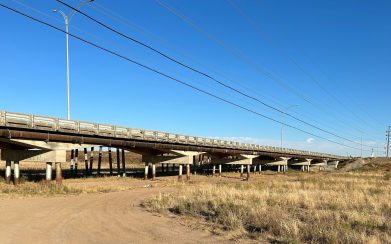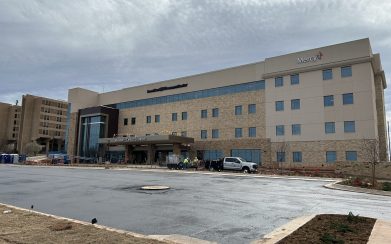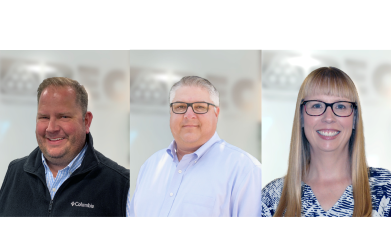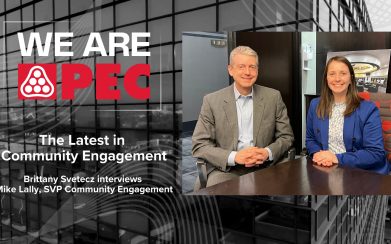Knowledge Hub
2022 ASHE PDC Summit 5 Key Take-Aways
By: Brett Walbridge, PE
The ASHE Planning, Design, and Construction (PDC) Summit is a respected industry event hosted by the American Society for Health Care Engineering (ASHE), a committed group of not-for-profit organizations with expertise in health care planning, design, and construction. The summit attendees include, hospital administrators, design firms, architecture, engineering, and construction companies who all share perspectives on optimizing healthcare design.
Programming for the PDC Summit consists of progressive topics affecting the future of the healthcare-built environment and presents exciting research spotlighting cross-team collaboration, PDC sustainability, designing for future generations, technology integration, and more.
The 2022 PDC Summit was held March 20-23rd in New Orleans, LA. Members of the PEC team were among the guests and below are five key take-aways that resonated with them.

Start with a technology vision, employ the right people, and determine how success will be measured. The future facility maintenance candidates will look much different than what we envision currently, candidates of choice will be considered super-users and have a wheelhouse containing:
- Data Analysis
- Data Quality
- Systems Integration Engineering
- Key Performance Indicators (KPI’s); comfort, energy use, maintenance, uptime, safety, etc.
- Determine how the data will be utilized
- Shifting from preventative maintenance to predictive maintenance
The International Code Council (ICC) is working to align codes with the National Fire Protection Association (NFPA). Fortunately, codes are “living” documents—continuously updated to adapt to an ever-changing world and keep people safe.
Alignment efforts:
- 2018 revisions: Smoke compartment sizes and use of power strips
- 2021 revisions: Alignment with K-Tags (Official CMS Interpretations)
- 2024 revisions: much of the alignment work will be incorporated Most notable additions are related to ambulatory care and temporary emergency structures
2022 Facilities Guidelines Institute (FGI): FGI’s 2022 proposal period is the opportunity for industry experts to recommend changes to the guidelines or design and construction of hospitals, outpatient facilities, and residential health, care, and support facilities.
New patient care unit sections to be added (Hospice, burn, behavioral health, etc.)
‘Patient of Size’ nomenclature replaced with ‘Individual of Size.’
A number of new ‘individuals of size’ requirements
Emergency Room Department requires one IOS bay
Five percent of waiting room chairs to be rated 600lb.
If providing an IOS room, you must also provide an airborne infection isolation IOS room
Standard 170
Extensive modifications to outpatient and residential sections
New unoccupied turndown requirements
Revised exhaust and ventilation requirements
Start by assessing your carbon footprint and decarbonization goals, then evaluate and prioritize. Begin by gaining an understanding of what your current carbon footprint is and use this as your baseline. Then establish goals based on the following three scopes:
- Scope 1 – Direct Emissions
- Scope 2 – Utility generation emissions
- Scope 3 – Value chain emissions (employee commute, shipping and receiving, waste generated from operations, etc.)
Evaluate and prioritize each action:
- Engage stakeholders in project ideation
- Evaluate each project for carbon and energy cost reductions, calculate financial return as well as avoided cost of carbon offsets and social cost of carbon
- Build action-oriented roadmap

The sector is seeing a shift to get outpatient procedures out of the hospital environment. This means higher acuity procedures are occurring in outpatient facilities, which typically do not have the robust infrastructure.
This has led to the creation of the ‘crossover MOB,’ a medical office building with capabilities to care for higher acuity patients. Characteristics of the ‘crossover MOB’ are:
- Mission Critical Facility
- Generally licensed under inpatient hospital regulations
- High investment in technology
- Modular and scalable infrastructure – the facility will see renovations before surpassing the service life of equipment
While discussing lessons learned from facilities affected by hurricanes Katrina and Ida as well as the COVID-19 pandemic, we were reminded, when designing facilities, consider all possibilities. Code minimum resiliency often is not enough.
- No infrastructure below grade if prone to flooding or storm surge
- Consider generator location, capacity, and protection from storm elements (Flooding, projectiles, temperature extremes, etc.)
- Helipad location and size. Consider the possibility of mass evacuation by air (multiple helicopters, capacity for military-size helicopters, etc.)
- Elevators used for evacuation – may limit ability to transport patients in mass evacuation
- Emergency water storage and treatment
- Sewer capacity / lift stations on site
- Lockdown capabilities
- Communication systems
Infrastructure capacity was constantly a limiting factor in quickly generating COVID treatment spaces:
- Provide additional capacity in main duct risers
- Provide additional med gas system capacity: O2 use was much higher with covid patients
- Additional capacity in emergency power systems and flexibility with building infrastructure to add additional equipment without needing to modify distribution
Must compare the cost of resiliency to the cost of loss of service.
- Consider the cost (financial and community impact) of evacuation of the facility
- Case study $800M facility constructed after Hurricane Ida in New York City had significant resiliency which amounted to 2% of construction costs
As you can see, the future of safe healing environments, is in extremely competent and compliant hands. We hope this gives you a high-level look at what is on the horizon. If you have any questions or would like to discuss a project in more detail, we are always open to a conversation about critical topics that affect the communities we serve.
Click below to download the Key Take-aways.

Brett Walbridge, PE
Brett Walbridge, PE graduated from the University of Kansas, with a Bachelor of Science in Architectural Engineering, in 2009. He holds licenses in Kansas, New Mexico, Nevada, Michigan, and Missouri.
Brett is a senior associate in the electrical division, responsible for design calculations, production of construction documents, and design of electrical systems including lighting, building power systems, data/telephone, fire alarm, public address systems, sound reinforcement systems, video systems, and electrical controls. He has experience in both new construction and renovation of medical facilities of all types.









